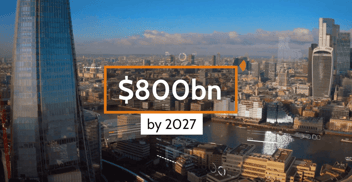With each monthly inflation update from the Office for National Statistics, the distant echo of recession becomes more perceptible.
In what has become a sombre series of measurements, the latest instalment of the CPI, released on Wednesday 20 July, saw the rate of inflation rise to 9.4%, marking a 40-year high. The spiral is not expected to stop here – most economists are anticipating double figures before the end of the year.
In response, the governor of the Bank of England, Andrew Bailey, has warned that interest rates will be raised again next month – what remains to be seen is the scale of that increase. This combination of high inflation, rising rates, and overall tighter monetary policy unlocks a radically different macroeconomic environment than that of the past 20 years. Indeed, it poses the most serious threat to investment and personal finance since the Global Financial Crisis of 2008.
The need to change
Investors who have previously relied upon quantitative easing to propel major stock indexes over the last 15 years will be lost in this new economic terrain. The tightening of monetary policy from governments across the globe will halt the production of new money and end the gradual inflation of equity prices.
In addition, the squeeze on consumer spending power will be greatly reduced as the cost-of-living crisis continues to unfold, weakening economic growth. It seems we are heading for a period of ‘stagflation’; so, it is critical that investors recognise the changing conditions and react accordingly.
Investors relying on the same instruments that have propelled growth over the past 20 years will find they are now too blunt to cut through. Investors must begin to take precautionary measures to mitigate their overall investments against such hikes. The need to maintain a well-diversified portfolio that consists of resilient asset classes has never been more urgent.
The real estate opportunity
Real estate comes under the umbrella of alternative investments, which are assets other than stocks bonds, or mutual funds. In recent years, such investments have seen enormous growth and are predicted to reach a value of $26.21 trillion in 2026. As a collective, alternative investments offer insurance against a public market weakened by slow economies. But as an individual asset class, real estate stands out from the crowd.
Firstly, it has shown a unique ability to withstand the pressures of inflation – the rental market shows a solid correlation with inflation and sometimes even exceeds it. This protects property owners by facilitating a steady income that is not typically diminished by the inflation of the day.
In addition, although it is the bane of many hopeful homebuyers, demand in the UK housing market has persistently outstripped supply by some margin, leading to solid price releases and potential for capital appreciation. In fact, over the past decade, UK house prices have risen by 61%, while the UK stock market has increased by around half that figure.
Lastly, consider another consequence of high inflation – the reduction in the real value of debt. Given the high probability in the commercial real estate industry that a property owner has at least partially financed their purchase by taking on debt at a fixed interest rate, the value of that debt will decrease in real terms over the inflationary period. Meanwhile, the rental market continues to rise or follow a similar trajectory to inflation.
A fraction of a chance
Despite the above argument, many investors will consider commercial real estate and property development as areas reserved for the super-wealthy. While this was true for many years, fractional investment platforms have lowered the barriers of entry, inviting a wider pool of investors to grow their wealth with one of the most secure asset classes on the market.
In fact, you can now invest for as little as £5,000. With the current economic conditions offering significant danger to the easy-growth investments that have flourished over the past decade and a half, now is the time for investors to take the precautionary and opportune steps – diversify your portfolio and trust the assets with a proven track record of success in the current climate.




















